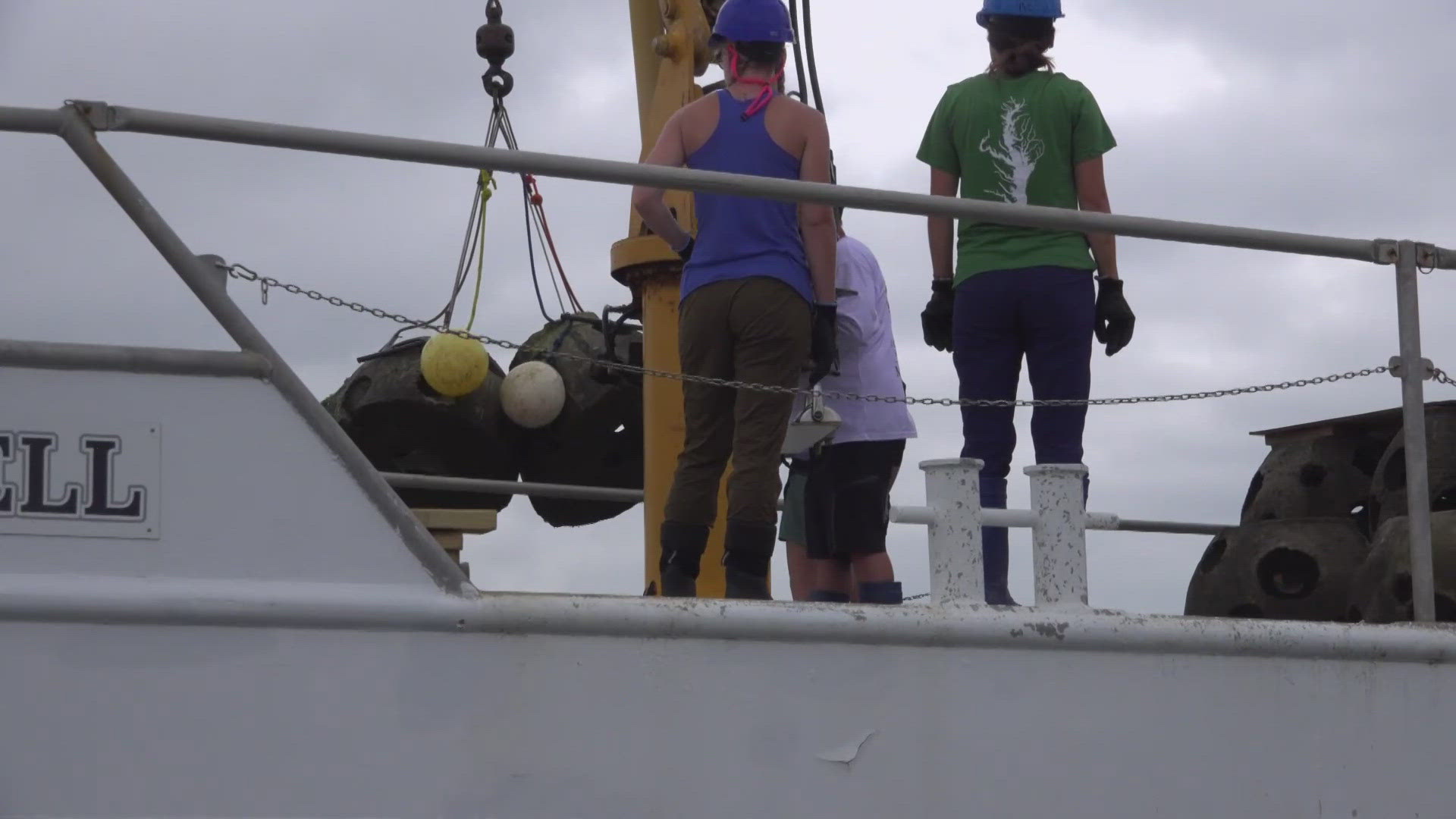ST. MARY'S COUNTY, Md. — An oyster restoration project within an underwater sanctuary on the St. Mary's River in Maryland will meet a deadline for completing work by a 2025 multi-state deadline to restore oysters to 10 Chesapeake Bay tributaries in Maryland and Virginia, according to the Chesapeake Bay Foundation.
CBF workers placed 144 concrete "reef balls" seeded with oyster larvae on the bottom of the river Wednesday.
At least 600 of the structures, which resemble 3-foot diameter whiffle balls will be placed on the river bottom near St. Mary's College of Maryland to complete the project, CBF Maryland Coast Scientist Julie Luecke said.
At least 100,000 baby oysters planted in the river are expected to reproduces millions of offspring.
Oysters have the capacity to clean and clarify Bay waters because they are filter feeders that can battle against algae blooms that cloud the Chesapeake Bay.
Oysters have already colonized shoreline pilings and rocks near the restoration site.
Luecke said the concrete reef balls are particularly well suited to making the project resilient to climate change.
“There's adaptation and there's mitigation. And I think that oysters have a part in both of those," Luecke said.
“These allow these oyster reefs to persist past some of the challenges of climate change. Sedimentation is a big one. The reef balls help adapt our oyster reef restoration process to include thinking about climate change and making sure that this is a sustainable reef.”
The reef balls could be seen sticking out of the muddy bay bottom during a sonar survey of the area Wednesday.
Luecke explained that is important because layers of life-choking mud and sediment from decades of farming and development have smothered a lot of the Chesapeake’s oyster beds.
To bring oysters back, they need something hard, like the reef balls, to stick to, said CBF restoration coordinator Kellie Fiala.
“By casting them in these kinds of igloo-like structures, you're getting the oysters up and out of that muddy Bay bottom," Fiala said.
"Additionally, you've got those holes in there that allows water to flow through bringing food for those oysters on the inside, and just becoming incredible fish habitat.”
Luecke explained the goal is to eventually get the oysters to grow on their own and build up natural reefs on generations of shells that will rise with the sea level faster than sediment can cover them up.
Combined, Maryland and Virginia are nearing their goal of having at least 2,300 acres of restored oyster beds by the end of 2025.
Maryland has designated oyster sanctuaries in five rivers, including St. Mary's.

